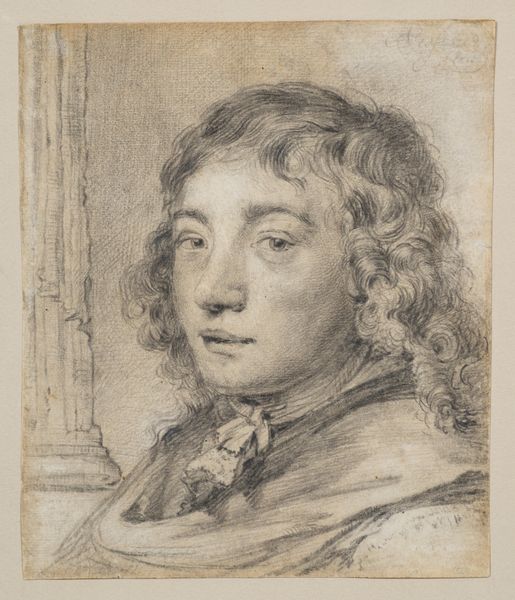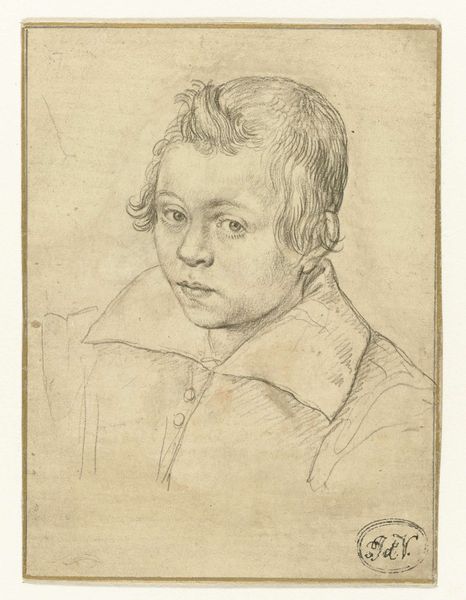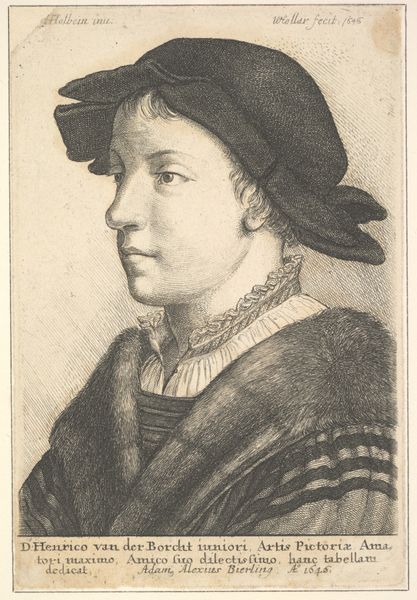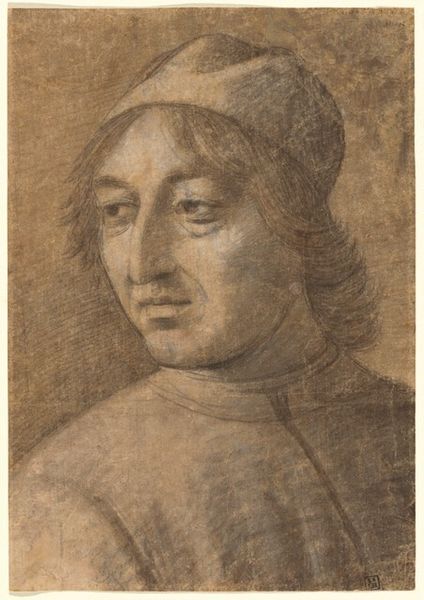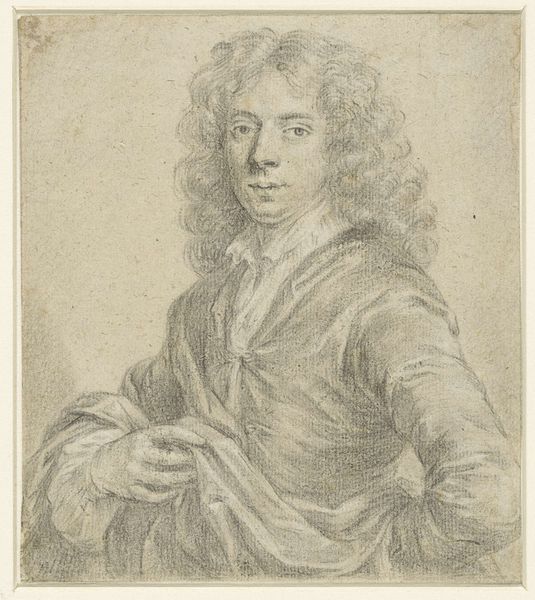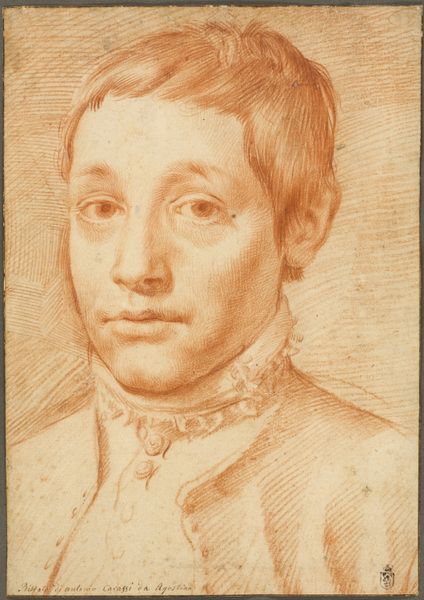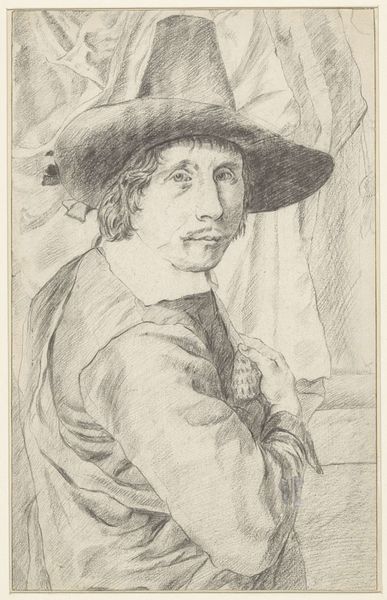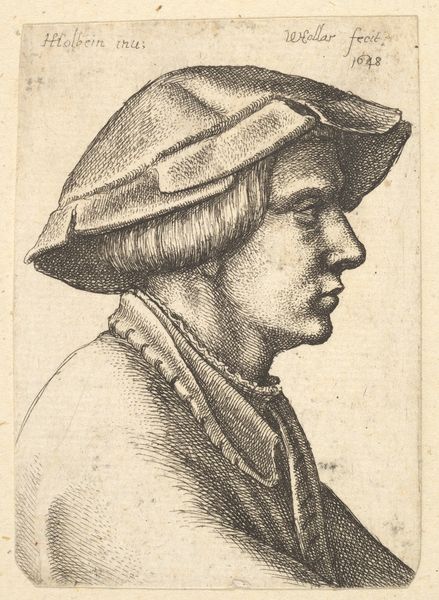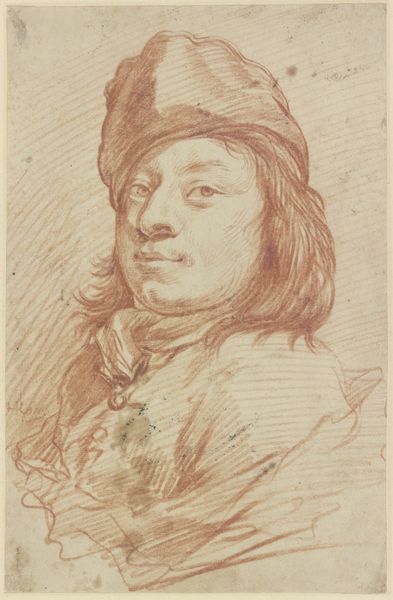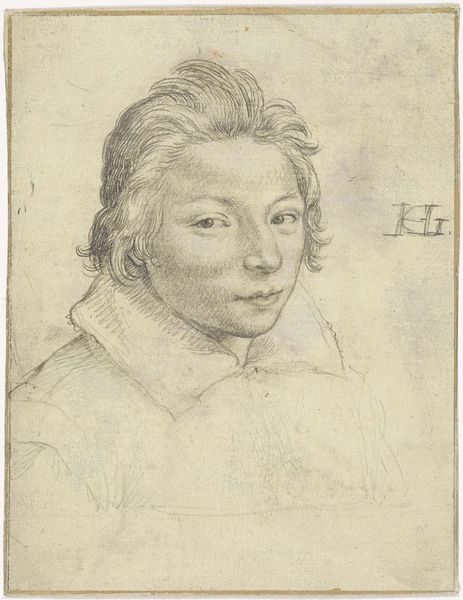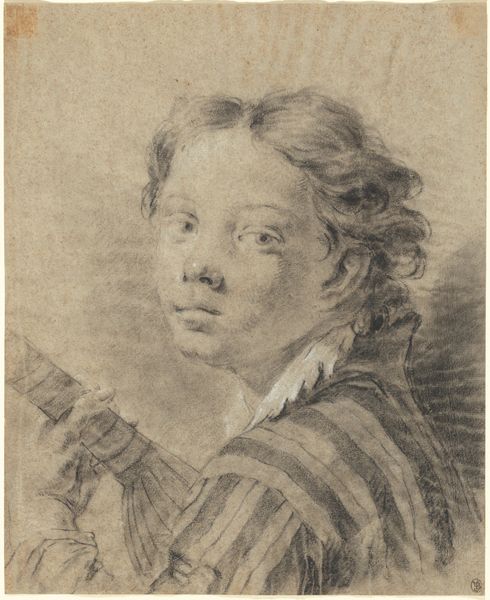
Jüngling mit gesticktem Hemdkragen im Dreiviertelprofil nach links 1626
0:00
0:00
drawing, paper
#
portrait
#
drawing
#
baroque
#
paper
#
14_17th-century
#
portrait drawing
Copyright: Public Domain
Editor: Here we have David Bailly’s "Young Man with Embroidered Collar, Three-Quarter Profile to the Left", created in 1626 using drawing on paper. It strikes me as very precise, almost scientific in its detail. What do you see in this piece? Curator: Note the exceptional rendering of form achieved through meticulous cross-hatching. Bailly’s command of line weight modulates across the figure to articulate light and shadow. The subtle gradation gives volume to the young man’s face and clothing, inviting closer inspection of sartorial details. Consider the textures: smooth skin versus the intricately patterned collar. Editor: It’s like he's using lines to sculpt the face, isn't it? Curator: Precisely. Observe how the linear structure becomes denser in areas requiring depth, specifically under the chin and around the eyes. Ask yourself: how does the relative openness of the strokes communicate a sense of light falling on the subject? How do these lines build form, volume, and texture in two dimensions? Editor: I never thought of it that way. So it’s the interplay of the density and direction of the lines that creates depth. Curator: Exactly! And beyond representing form, line contributes expressive and emotive content. Consider the contrast between rigid linear structure and softer curved forms of hair or delicate lacework. It is by juxtaposing opposing formal qualities such as texture, directionality, or compositional plane relative to each other, that visual tension arises for aesthetic response. Editor: Thanks for pointing that out. Now, I see a new relationship between what is depicted and how it is depicted.
Comments
No comments
Be the first to comment and join the conversation on the ultimate creative platform.


